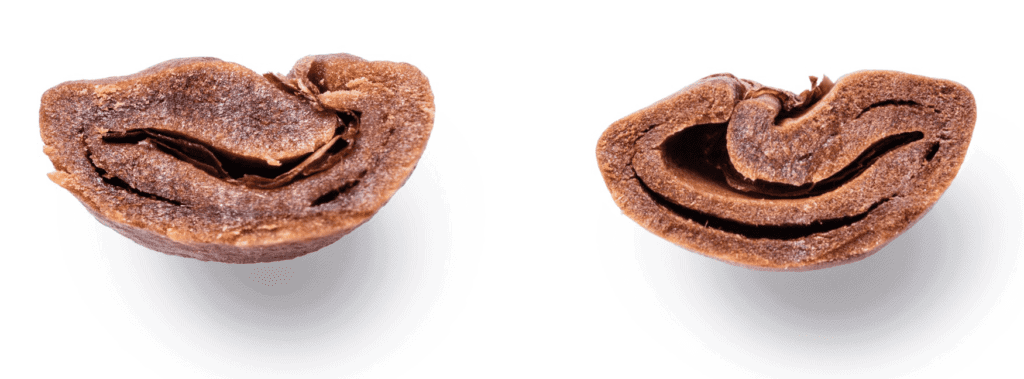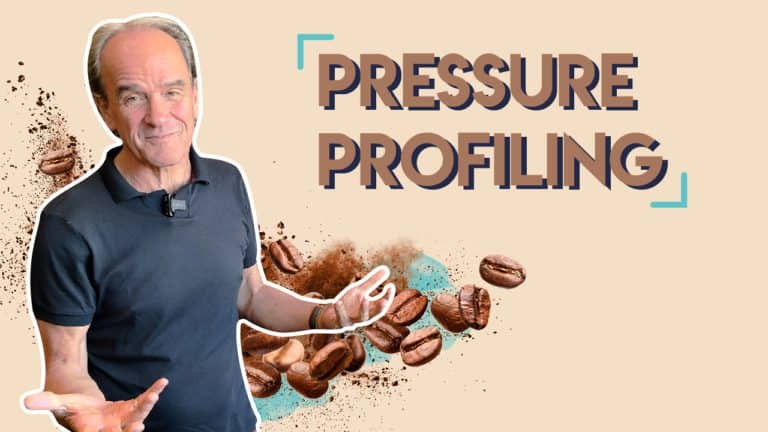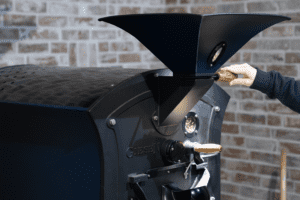Welcome to ‘Pressure profiling with Giesen roasting machines’. In this episode, Willem discusses the subject ‘pressure profiling’. We are so excited to share our enthusiasm about the great profession and craft of roasting coffee. We hope you love it as much as we do. Last month Willem talked with Jaime Duque about roasting special coffee. Missed that one? Click here. Enjoy the fifth episode of ‘Behind the Roast’ with Willem Boot!
Cupping sheet
Below you can download the filled-out cupping sheet for both roasts. Next to this, you can download an empty cupping sheet.
Coffee Roasting and Pressure Profiling
Since the 1920’s, coffee roasting machines have been designed to accomplish coffee roasting with two basic parameters for the creation of roasting profiles: time and temperature. In the 1970’s, innovative industrial technologies were developed for commercial grade coffees, facilitating ultra-fast roasting times by manipulating a third parameter: airspeed. Thus, roasting times could be shortened to six minutes or even faster. Later on, in the early years of this millennium, manufacturers like Giesen Coffee Roasters became inspired by these types of innovations and as a result, Giesen incorporated airspeed as a controllable factor in the design of their roasting machines.
Design of drum roasters
Most drum roasters are essentially designed very similar. A roasting fan, or impeller, continually sucks air through the roasting system. The air intake is usually situated near the burners of the machine and preheated roasting air is mixed inside the roasting chamber with the coffee beans and evacuated by the roasting impeller.
The design of most drum roasters allows the roasting impeller to continually evacuate more air than the roasting machine is taking in. In simple terms, the roaster is always a bit out of breath. With the force of the roaster impeller, the machine collects chaff in the roasting cyclone and roasting exhaust (mostly smoke) is blown out through the exhaust stack.
Roasters that utilize the concept of airspeed, more air at higher temperatures can accelerate the heat transfer and increase the Rate of Rise (RoR) and at lower heat input levels, more air will slow down the heat transfer and decrease the RoR.
The impact on flavor works as follows: more airflow can accentuate the brightness of the coffee; too much airflow can create sourness. Too little airflow will mute the acidity and potentially lead to leather-like or even smoky flavor notes. So, in theory, airspeed offers potential benefits but nevertheless few roasting companies have embraced airspeed as a roasting parameter due to the lack of controllability and consistency.
Solution for the problem
There is one essential design flaw with drum roasters and Giesen developed a very smart solution for this problem. Basically, all drum roasters share a common problem; the internal air ducts and the impeller of the machine become gradually clogged with creosote-like residues, composed of oils, roasting tars, water vapor and dust particulates, causing a gradual change in the internal environment of the machine, which fundamentally alters the conditions of the roasting process. Thus, the operating pressure of the machine gradually changes, and subsequently the conditions and rate of heat transfer are altered which will impact the flavor of the coffee and it will cause an inherent inconsistency in the roasting process from batch to batch.
I remember the striking difference of the flavor profiles of our roasted coffee before and after a deep-cleaning of our vintage German roasting machine. Once the internal vents of the machine became relatively dirty, our coffee would taste somewhat dull with lacking peak notes and after the deep-cleaning was completed it was as if we were tasting a different coffee with lively acidity and more aroma.
An excellent solution to the traditional phenomenon of inconsistent and changing flavor profiles of drum roasters can be pressure profiling, which was first developed by Giesen Coffee Roasters.
Let’s first define some terminologies that are relevant in the context of pressure profiling
- Heat transfer is the movement of thermal energy from one thing to another thing of different temperature. There are three different ways the heat can transfer: conduction (through direct contact), convection (through air movement), or radiation (through electromagnetic waves).
- Pressure is the force per unit area that one region of a gas, liquid, or solid exerts on another. Pressure is usually measured in Pascal units, atmospheres, or pounds per square inch.
- The definition of air pressure is the force exerted onto a surface by the weight of the air. The ambient air pressure at sea-level is just over 101 kPa while the operating pressure inside the coffee roasting drum can be surprisingly different.
Professor Henry Schwartzberg wrote a very interesting paper about the use of roasting energy and about the theory of controlling this energy usage during roasting. His mind-blowing paper is filled with utterly complex mathematical formulas describing the roasting process. Click here to read this article.
Basically, he describes the heat transfer efficiency (from the roasting gas to the coffee beans) as a process that depends on various factors: the fraction of roasting gas that is in contact with the beans and transfers heat and the combined surface area of the mass of the coffee beans. In this process, pressure plays a cardinal role, as it will determine the speed and efficiency at which the heat transfer will unfold.

The roasting of coffee beans is an utterly complex process that alters the chemistry of coffee and ultimately the flavor profile of the beverage. Each bean consists of hundreds of thousands of individual cells that are unique in size and volume. The ability to create profiles using air pressure provides the roaster operator an extremely valuable tool to effectively control the rate of transfer through varying modulations of convection heat.
How does roasting with pressure profiling function and what is needed to make it work?
- The first requirement is to incorporate a measuring gauge that continually monitors the operating pressure of the roasting machine.
- Second, the roaster must be equipped with a frequency drive that controls the rpm of the roaster impeller.
- Third, the machine must facilitate information loopback from the pressure monitor to the impeller, and finally, the operator must be able to control the operating pressure through some sort of a set point control.
With all these provisions in place, the operating pressure becomes a truly integrated, controllable, and repeatable variable of the roasting process, providing a beneficial additional roasting parameter that can lead to unique roasting profiles.
Ultimately, it provides the roaster operator the ability to influence the chemistry of the coffee and its flavor.
In the upcoming year of 2023, I will publish a second article about this fascinating topic and we will review in detail how to apply the concept of pressure profiling with your Giesen roasting machine for the improvement of your flavor profiles.
Willem Boot
Willem Boot is Brand Ambassador of Giesen Coffee Roasters and founder of Boot Coffee Campus, a leading coffee training institute for the coffee industry. Check the program of specialized courses at www.bootcoffee.com.






